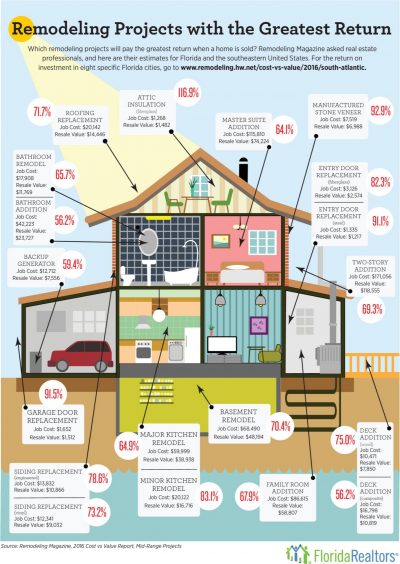Getting Ready To Sell
Getting your home ready to sell will be work, but the payoff is how much money you will get at closing, so roll up your sleeves and get busy.

Exterior
What does the outside of your home say to buyers? Does it say “Welcome, this is a great place to live!” or does it say “Beware, there could be problems with this house.” The condition of your home’s exterior is most important when it comes to a buyer’s first impression of the home.
Interior
Rule number 1: I can not stress this enough – Clean, Clean, Clean! No one wants to buy someone else’s dirt (yuck) so make sure your home is sparkling clean and smells fresh. Then make your home warm, bright and welcoming.
Renovating
Before undertaking renovations, consider your Return On Investment (ROI) and if the work will increase your chances of selling. Minor renovations can improve the overall impression of a property. Upgrades to systems will eliminate concerns buyers could have about taking on a large repair shortly after closing. But it is best to stay away from high-end remodeling, many of those won’t pay you back.
The projects with the highest ROI? A new front door or a new garage door is a sound investment and a minor kitchen renovation (think new flooring, counters and paint) will pay you back over 80% of your cost, but a major kitchen renovation will only pay you back about 64%.
Staging
Staging can include everything from de-cluttering and sprucing up to moving in furniture to fill rooms. The goal of staging is to help buyer’s feel like this is a home they want to live in, and that is easier when the home is clean, neat and stylish.
In addition, staging can speed up your sale. A 2010 study by the Real Estate Staging Association found that unstaged homes spent 181 days on the market, before the home owners decided to have them professionally staged, at which point they, on average, sold in 60 days. This equates to a total of 241 days. When staged first (prior to listing), homes averaged just 35 days on the market.

